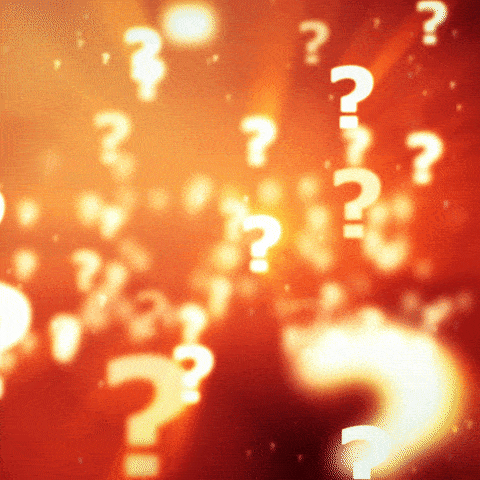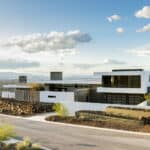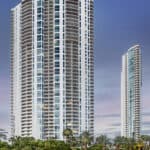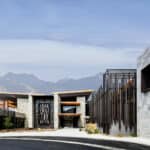
- How can I make the best use of lighting architecture photography?
- What are the key principles of composition to create stunning shots?
- Which equipment and camera settings are ideal?
- How can I enhance my photos during post-processing?
- What role does weather play, and how can I adapt to it?
- What’s the significance of licensing?
- Are there specific techniques that can help me capture in a unique way?
As a beginner, capturing architecture might seem overwhelming. But fear not, I will guide you through the essential tips & techniques that will kickstart your journey.
Top Tips
Lighting
- Utilize golden hours for soft, flattering light and well-defined shadows.
- Experiment with artificial lighting to highlight specific architectural features.
- Capture while the sun is behind you for blue Skys.
Principles of Composition
- Focus on symmetry, leading lines, and framing to enhance visual appeal.
- Use perspective to emphasize depth and create a sense of scale.
- Balance elements within the frame to maintain harmony and interest.
Ideal Equipment and Camera Settings
- Opt for a 24mm lens or wider while considering Tilt-Shift for zero distortion.
- Adjust the aperture for depth of field and sharpness throughout the frame (F8-F11).
- Maintain a low ISO to minimize noise, especially in well-lit conditions (ISO100).
Enhancing Photos During Post-processing
- Adjust exposure, contrast, and color balance to fine-tune the image, if you shoot RAW don’t forget to sharpen the picture.
- Correct perspective distortion to ensure straight and well-aligned structures, and use rulers as guides.
- Experiment with HDR techniques to merge multiple exposures for optimal details, or better manually blend different exposures.
Adapting to Weather
- Embrace dramatic skies and diffused light during overcast days.
- Follow the weather prior to shoot to reschedule in advance if necessary
- Snow can create a unique image, not every place is sunny all year round.
Significance of Licensing
- Licensing protects your work and defines how others can use it, make sure you close this in advance.
- Choose licensing terms that align with your intended use and audience that reflect the price.
- Ensure you understand and communicate licensing agreements clearly to clients, make it simple, less is more.
Techniques for Capturing Architecture in a Unique Way
- Shooting at sunrise can be unique to sunset
- Incorporate human elements for scale and to add an emotive touch, but not overpower the initial purpose which is the space.
- Look for unconventional angles and perspectives to showcase architecture differently.
Study the Subject:
Before photographing a building or structure, take time to study it.
Talk to the architect, designer, or client, and understand the design, history, and unique architectural features.
This knowledge will guide your composition.
Use a Sturdy Tripod:
A tripod is essential for a sharp image.
Use a level head to minimise post-production leveling afterward.
Plan Your Shoot:
Consider the time of day and the angle of the sun.
As the sun is your main source, let it guide you to different angles and locations.
Focus on Composition:
Use principles like symmetry, leading lines, and framing to create visually engaging compositions.
Experiment with angles and perspectives to add depth to your images.
Don’t forget our goal is to create selling images, not just creative ones.
Extra Tips
Best Architecture Photography Cameras Today
Top cameras for entry, semi, and professional level from top 4 manufacturers.
| Canon | Nikon | Sony | Fuji | |
|---|---|---|---|---|
| Entry Level | Canon EOS R100 24MP | Mirrorless |
Nikon Z30 21MP | ASP-C |
Sony A6700 26MP | Full Frame |
Fujifilm X-S20 26MP | ASP-C |
| Semi-Professional | Canon EOS R8 24MP | Full Frame |
Nikon Zf 25MP | Full Frame |
Sony A7C II 33MP | Full Frame |
Fujifilm X-T5 40MP | ASP-C |
| Professional | Canon EOS R5II 60MP | Full Frame |
Nikon Z8 46MP | Full Frame |
Sony A7CR 60MP | Full Frame |
Fujifilm GFX 100 II 102MP | Medium Format |
Expert Advice
Gear and Equipment don’t make a great photo.
No one cares which camera you use, it’s all about creativity.
Don’t go too wide, use different focal lengths (24/50/70/200mm).
To create a unique mood and perspective.
Scout the location, and get client feedback on important elements.
Photograph to edit, don’t edit to create a photograph.






